
Italy, Part One
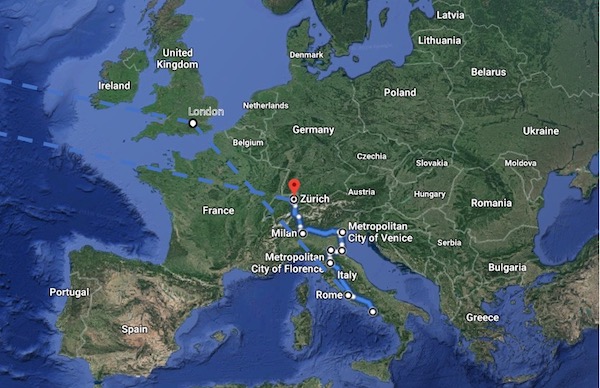
Last year, from June 9-28, I toured the great cities of Italy. It was a unique opportunity to visit the most famous places in world history. Along the way, I developed a deeper understanding of the ancient world, including the time of the New Testament.

The trip started with a couple days in London. I took the opportunity to revisit the British Museum (possibly the best ancient history museum in the world). I also visited the Museum of Methodism, relearning the stories of the Wesley brothers and the Great Awakening.
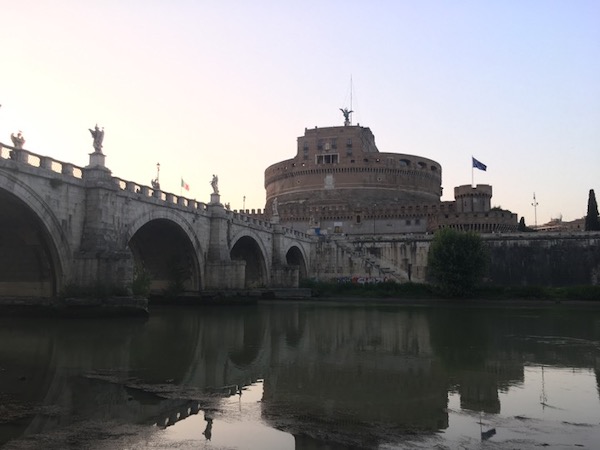
After landing in Rome, I connected with my friend, a great brother from church who was on a European backpacking adventure. We checked into our hotel – only yards from the Vatican – and set off to explore the city of Rome.
The Castel Sant’Angelo (the round building in the picture above) was built by the Emperor Hadrian and has a long and colorful history. It was here, in 590 AD, that Gregory the Great had a vision of an angel sheathing a sword, and ending a plague. You can see a statue of the angel on the top of the building, built in commemoration of this event. I was excited to see this place since I had recently been studying the life of Gregory the Great.

The Colosseum, of course, is the most famous landmark in Rome. It is still impressive, and there is something unnatural about being in such a place. More people died per square foot in the Colosseum than in any other place in the world – perhaps around 1 million people within its confines. (Compare that with the roughly 150,000 who died from the blast at Hiroshima).
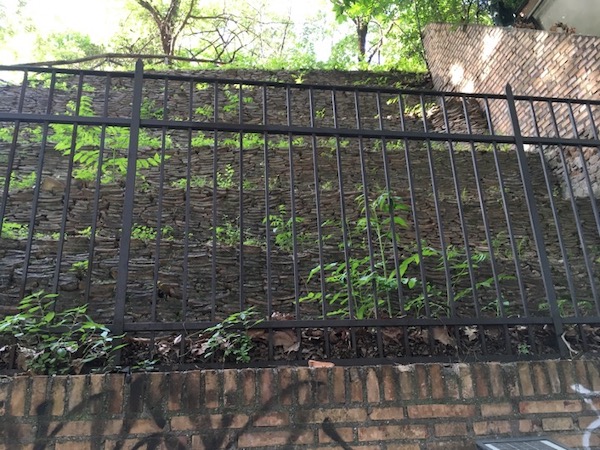
One rarely visited site in Rome is Monte Testaccio. It is a 220,000 square foot heap of discarded pottery, 115 high. During the time of the Empire, so many goods were transported to the capital that the site became a garbage pile for the empty clay pots. It contains around 53 million amphorae (clay jars). It is not a well-known area, but it provided a fascinating glimpse into the world of the Roman Empire.

The Mausoleum of Augustus was one of the first building projects undertaken by Emperor Octavian (‘Augustus’). Octavian defeated Mark Antony and Cleopatra at the Battle of Actium in 31 BC and was the ruling emperor at the time of the birth of Christ.
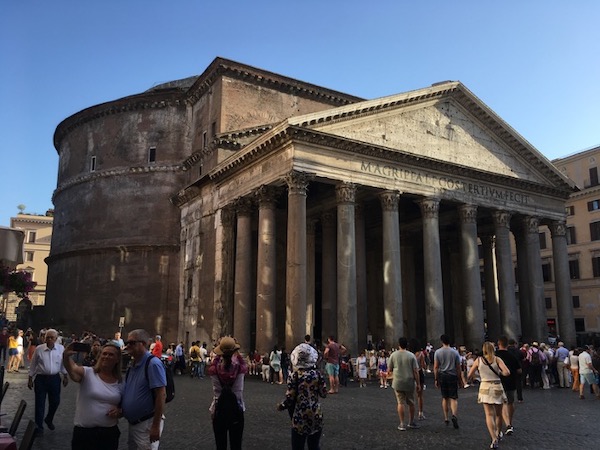
The Pantheon is one of the best preserved buildings from Ancient Rome, built around 125 AD. While it is now used as a Roman Catholic Church, it has had a significant influence on architecture throughout the western world.

The interior of the Pantheon, with its vast domed ceiling, is an architectural marvel – especially considering the degree of engineering that was required to build this almost 2000 years ago.
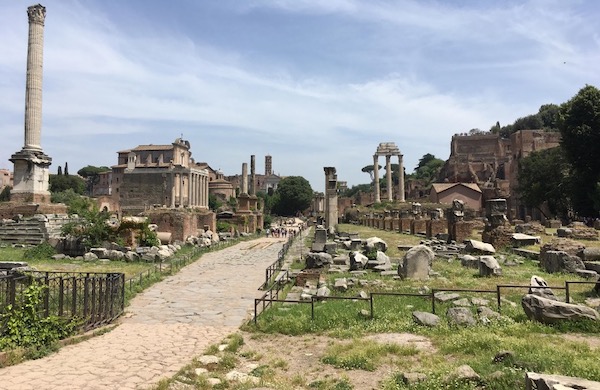
The Roman Forum is the site of many of the great events of Roman history. Here one can see the Roman Senate, observe the Temple of Vesta and the House of the Vestal Virgins, and stand in the location where Julius Caesar was assassinated.
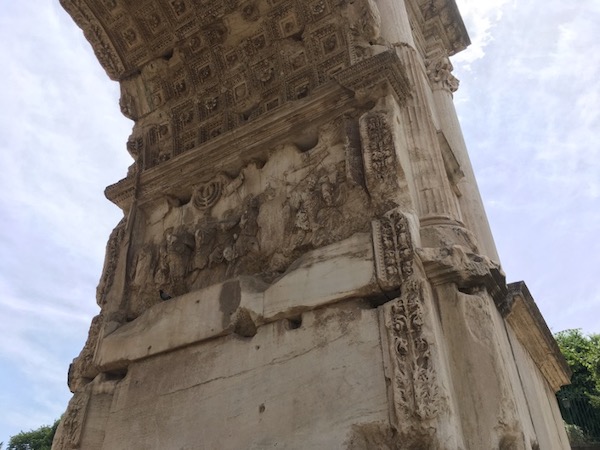
The Arch of Titus, located on the Forum, was built by the Emperor Titus. Titus presided over the Seige of Jerusalem in 70 AD. The Arch commemorates the Roman victory, and if you look closely, you can observe Roman soldiers carting off the Menorah (the Jewish Candlestick) from the Jerusalem Temple.
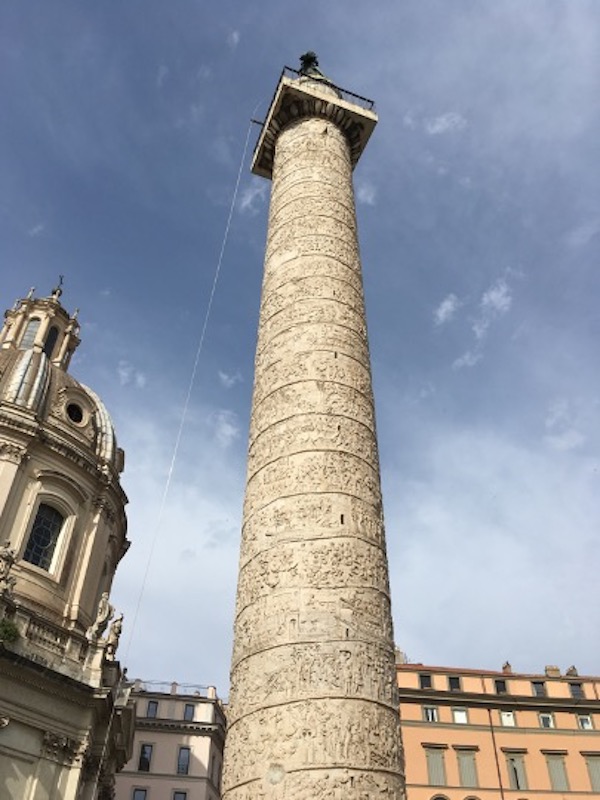
Trajan’s Column, completed in 113 AD, commemorates the victory of Emperor Trajan over Dacians. The entire column contains depictions of the war, and it stretches 98 feet into the air.

Nearby, the Mamertine Prison is alleged to have held Peter and Paul as they waited for trial from Emperor Nero, around 67 AD.
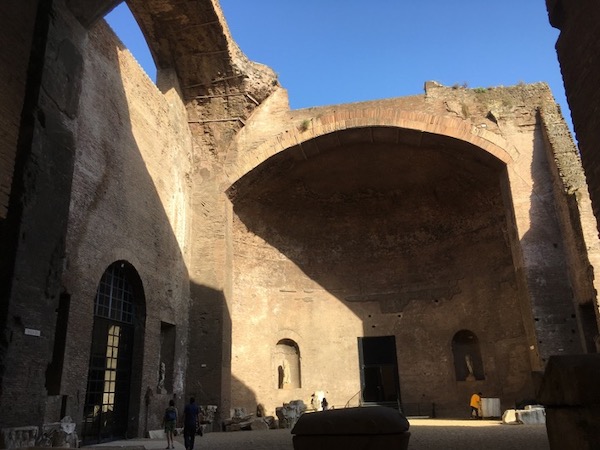
The Romans loved their baths, and the Emperor Diocletian was no exception. In 306 AD he completed the largest imperial baths in the empire, with the entire complex covering 32 acres. Even today, they are an immense monument to the size and power of the Empire.

The Battle of the Milvian Bridge took place on October 28, 312 AD. On that date, Constantine triumphed over Maxentius. Constantine claimed that, in a vision, he was promised victory through the Christian cross. From this victory, Constantine went on to legalize Christianity throughout the Empire.
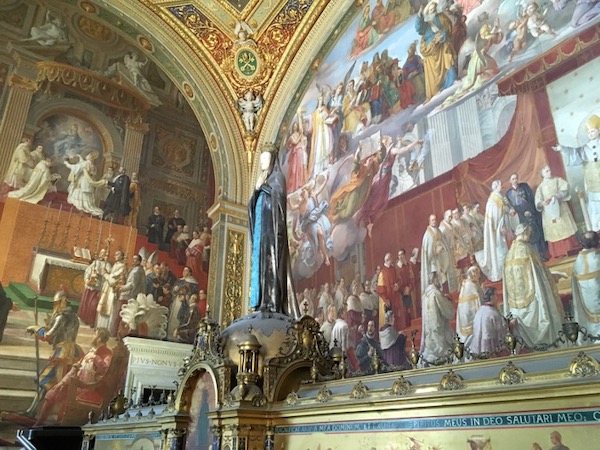
The Vatican Museums are an orgy of gold, wealth, and art, containing the treasures of the popes throughout the ages. This entire room was created in honor of Pope Pious IX’s proclamation of the Immaculate Conception of Mary.
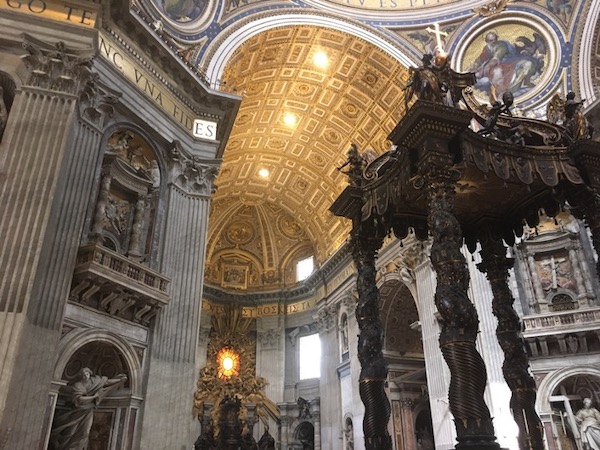
St. Peter’s Basilica in the Vatican is probably the most famous church building in the world. It was financed in large part by the indulgences sold by the Roman Catholic Church during the Reformation. It is said to be the burial site of St. Peter, and it covers a sprawling 5.7 acres.
Thanks for joining me on this recap of my journey through Italy. I’ll be back in a few weeks with highlights from the second half of the trip!



